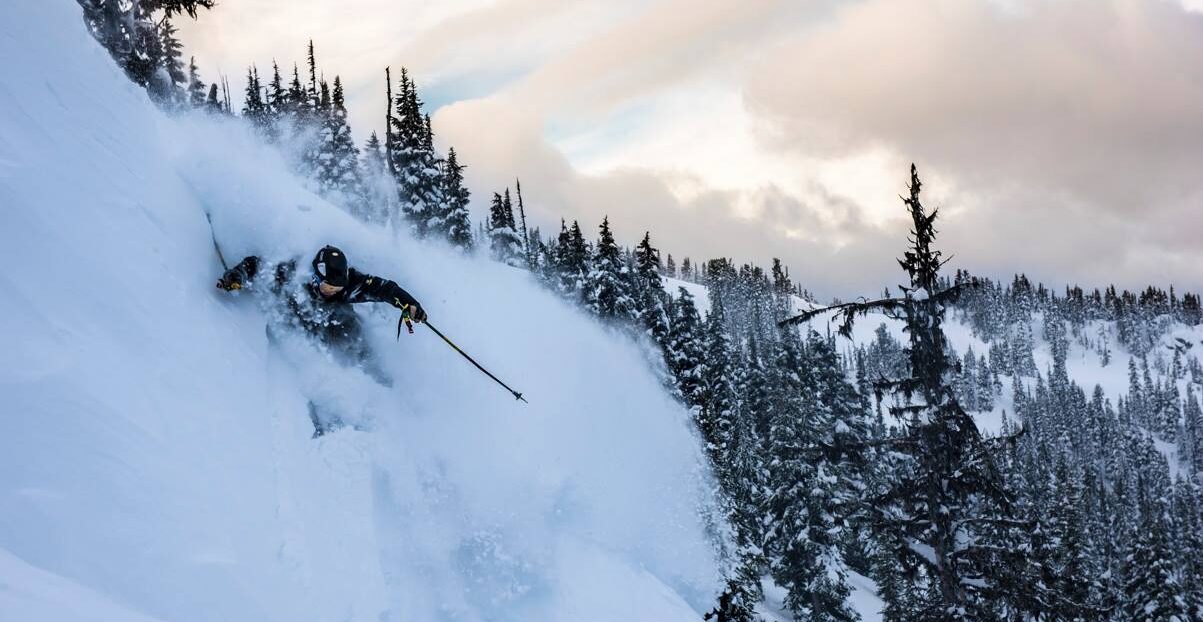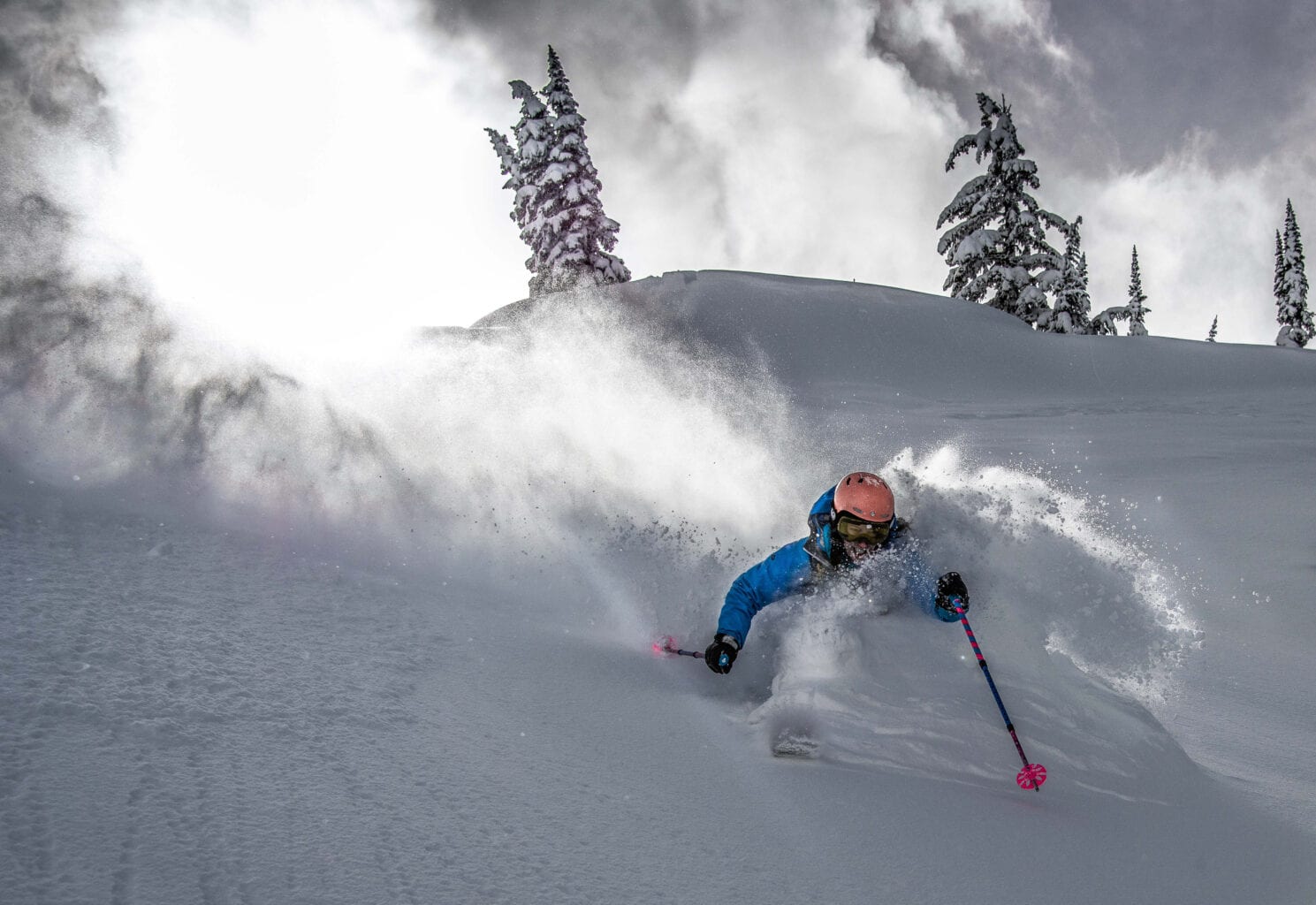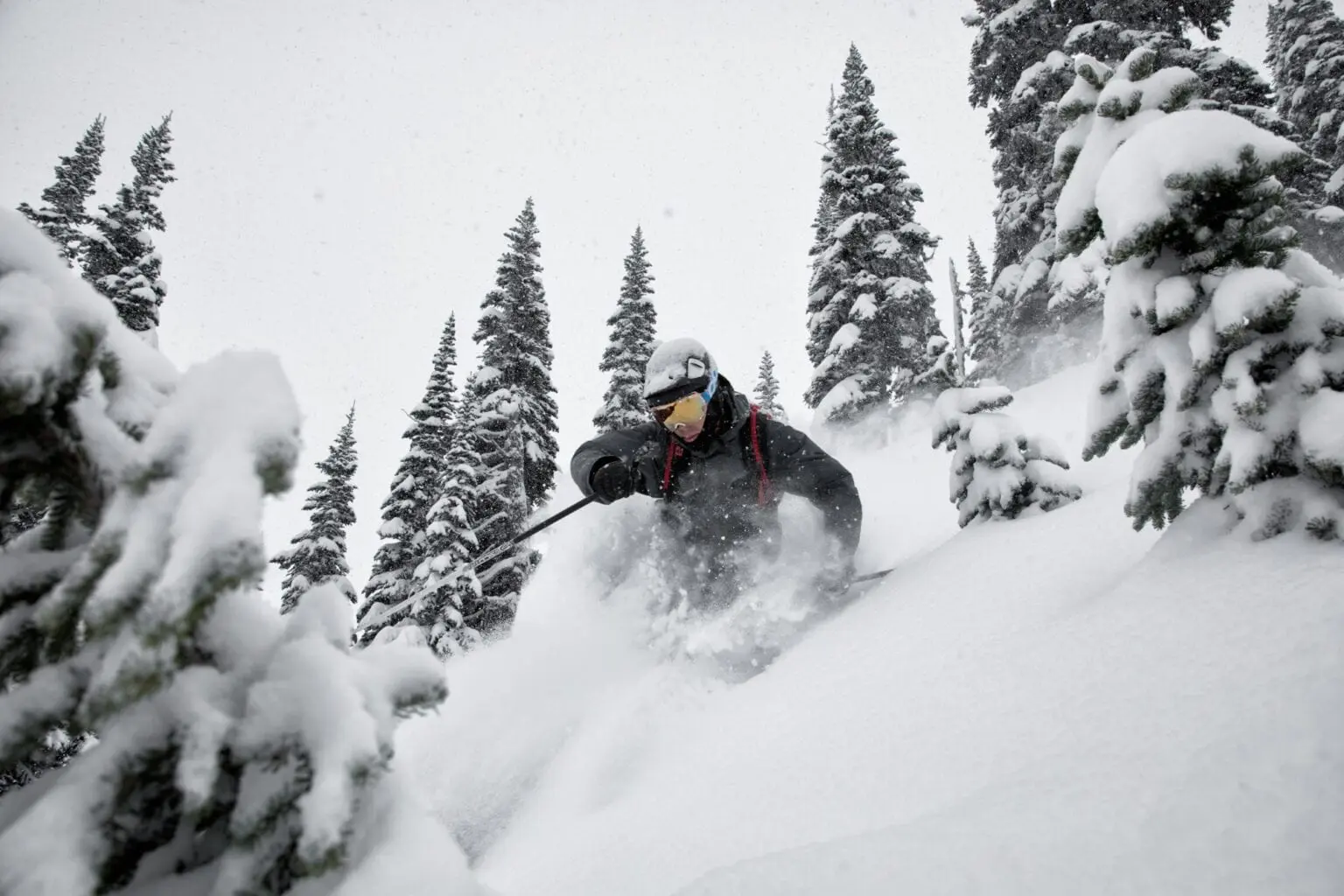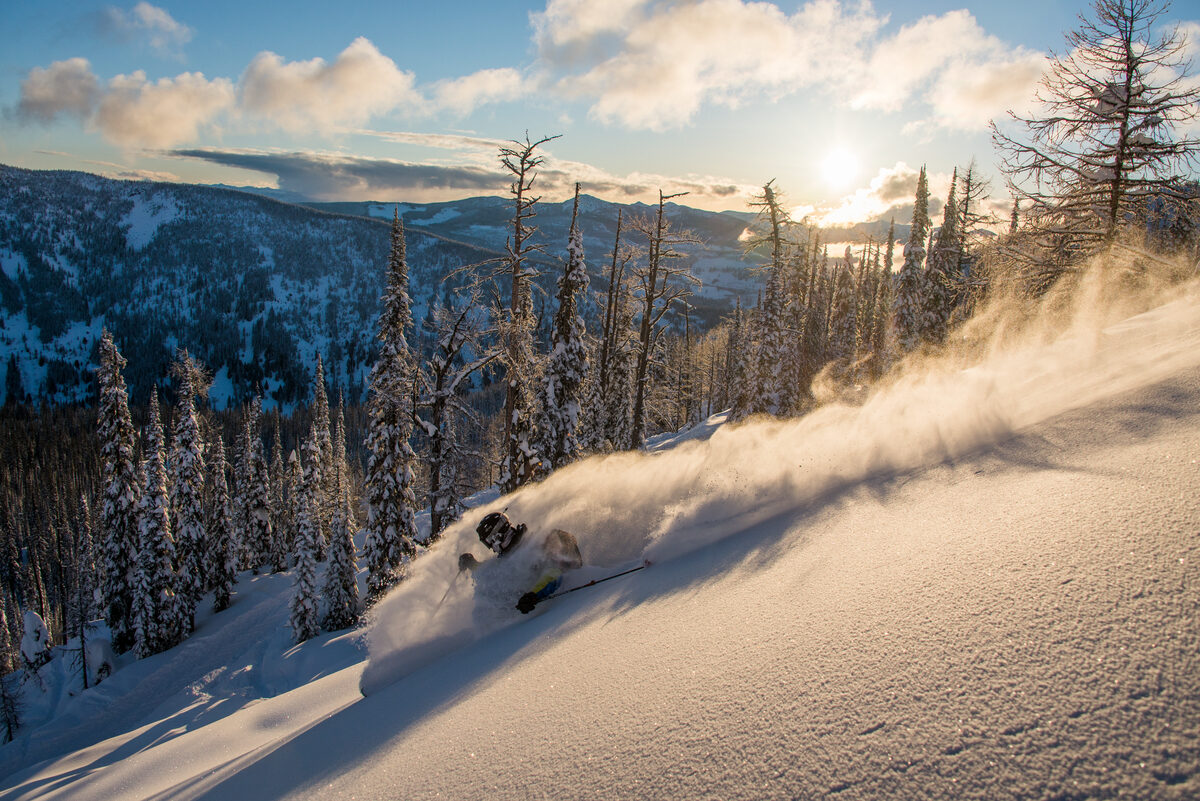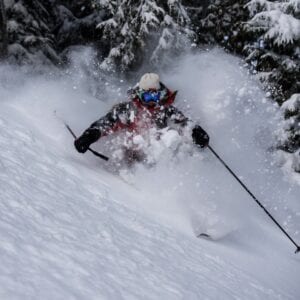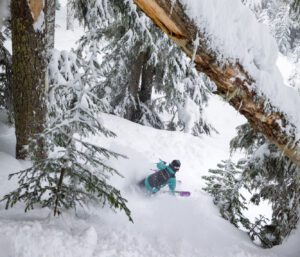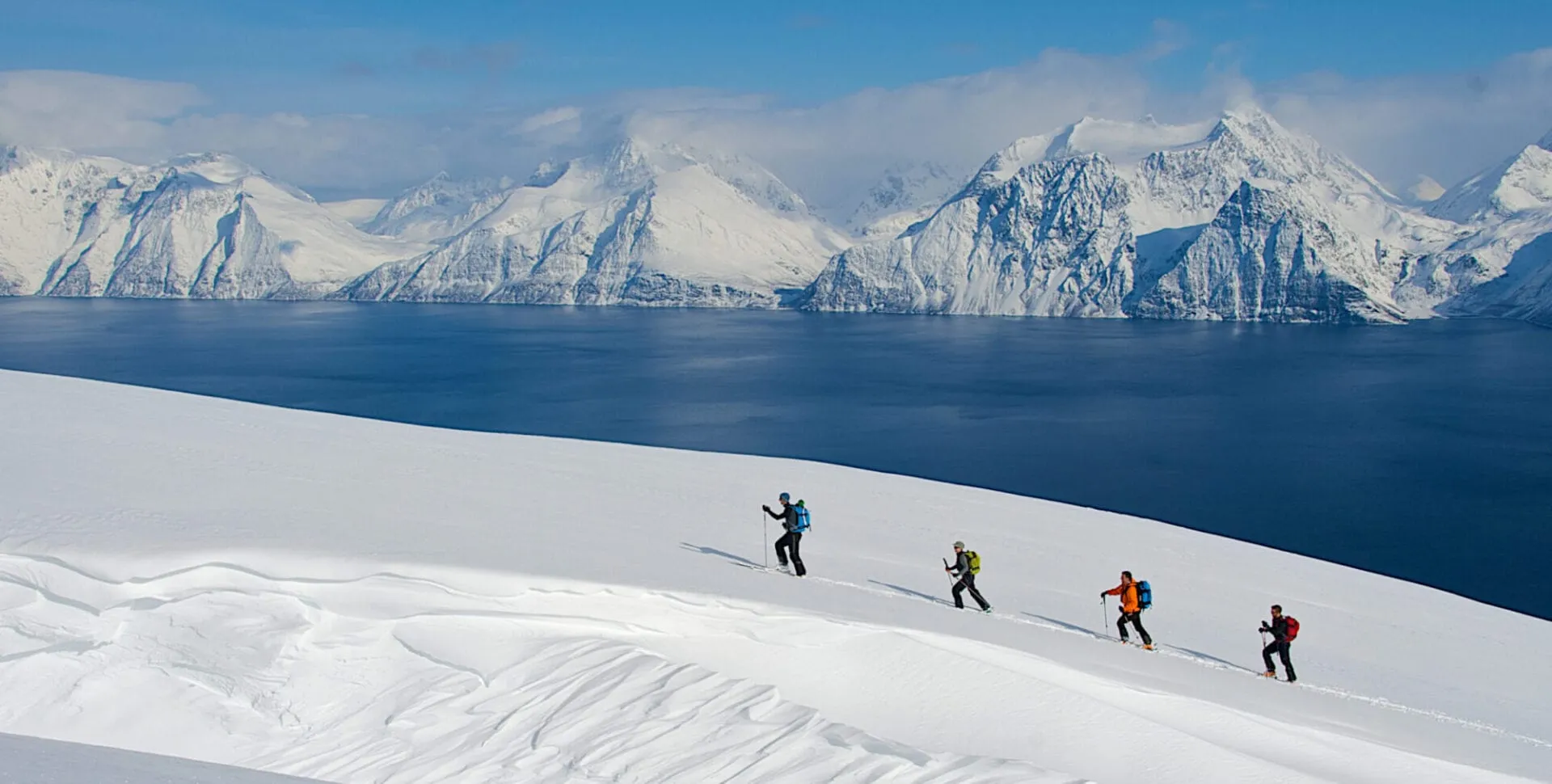Skiing powder is like the holy grail for some skiers; if not for the difficulty of actually finding fresh untracked snow, but because the technique required is a bit of a mystery. You’ve probably tried analysing pictures and videos of the pros, but it won’t help that much because let’s face it, all the action is happening under the snow.
For most people learning to ski powder, you might be limited to a run or two in the morning of a powder day if you manage to get in line early enough, or the sideburns of a run that has been totally tracked out. It’s not an easy environment to learn in. But if you’re lucky enough to find yourself up in the mountains one day, helicopter or snow-cat assisted, it’s time to put some theory to your technique so you can get the most out of your powder experience.
1. Understand how to make your skis float
When your skis are immersed in deep powder they are difficult to turn. Really difficult. So before you attempt a turn, you need to have enough speed for the skis to lift up and float in the soft snow. Imagine the hull of a speed boat lifting up out of the water as it accelerates – it’s similar to this.
Powder skis have been designed to float so you don’t need a huge amount of speed to make them lift, but once you have enough, your skis will feel lighter and easier to turn. If you are less confident with speed in powder, start off with your skis at a 45-degree angle down the slope so it’s less confronting than pointing them straight down – especially on steeper terrain.
2. Adjust your stance for the conditions
When we ski powder we talk about skiing more ‘two-footed’. What we mean by this is spreading your weight more evenly between your feet rather than focusing on weighting the outside ski. Depending on the width of your stance, you will also position your feet a little closer so the skis can float together and you can balance more efficiently. But make sure your skis are not touching; this is powder skiing, not the ’80s.
3. Unweight your skis and turn
Call it whatever you want; a pop, a bounce or a jump. When you extend your body you are pushing down into the snow so the skis flex and the snow pushes back. These two forces combined will ‘unweight’ you and your skis, making it easier to initiate your first turn.
4. Speed is your best friend in powder
Keep a steady rhythm in the fall line as you ‘bounce’ from turn to turn. You will notice that it’s easier to unweight your skis when you have more speed because the force of the snow under your feet is greater when you are travelling faster.
Start with shorter radius turns as you learn the timing of your technique. You should feel like you are bounding, or jumping, from side to side as you make your way down the fall line.
5. Controlling your speed
Adjust the shape of your turns to control your speed. On steeper slopes spend less time facing down the fall line to avoid losing control, whilst on flatter terrain you’ll want to be pointing your skis down the fall line to keep up your momentum so you don’t get bogged.
Depending on how deep the powder is, remember the depth of the snow will provide a considerable resistance and help control your speed. This is a useful tip for skiing powder on steeper slopes where people feel reluctant to let their skis run. Once you do take your foot off the gas a little, you’ll quickly discover that the deep snow slows you down a lot. Your rate of acceleration will stop just beyond the speed you are used to travelling at as the resistance of the snow takes effect.
All you need to do now is start your turns, use your turn shape to control your speed and enjoy the thrill of skiing powder at a slightly faster pace. It’s actually much easier once you get used to it… especially after you realise that it doesn’t hurt to crash in powder!
Like many things we learn in the mountains, it’s all about letting go.
Powder snow can be very frustrating to ski when you constantly have your foot on the brake – or if you’re trying too hard and doing too much. Eventually, you will develop a feel for the forces at play under your feet and how you need to adjust your approach in relation to the slope you are skiing. Be patient.
If powder skiing was crazy difficult, then it wouldn’t be so popular. It will get easier for you as you become more efficient. Make sure you have a powder specific ski suited to your ability, the right ski goes a long way to make everything much easier.
Just remember, these things take time, so if you are still struggling, have a lesson! Your instructor will be able to help you find better powder snow to practice in and give you much-needed feedback in the moment.
Mabey Ski’s adventure designers have travelled and skied all over the world to find the best hidden gem ski areas for anyone from beginner powder skiers through to professional freeriders. Whether you want to ski in the champagne powder of Niseko, Japan or the endless coastal powder of British Columbia, Canada – we are here to plan your powder-filled getaway.

